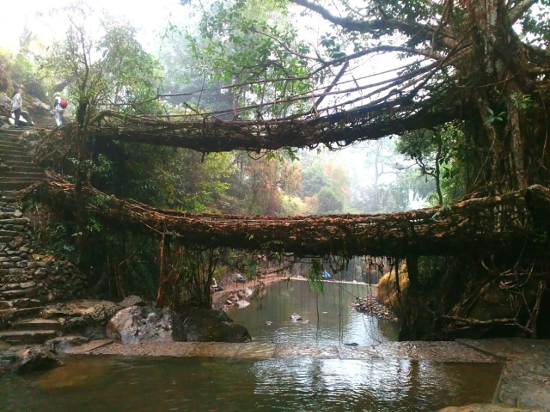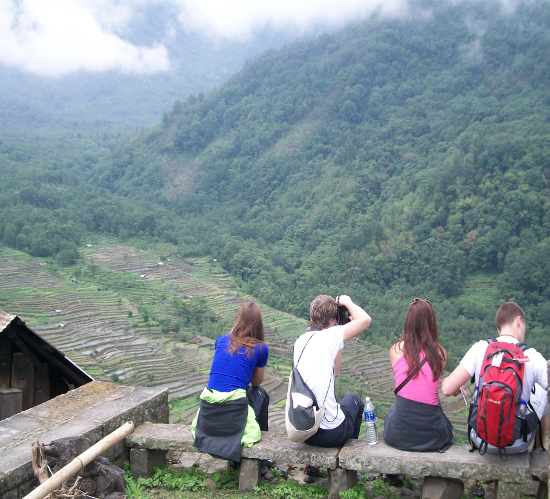- +91 9435637641 / 7099895338
- moc.yrevocsidivrup@yrevocsidivrup
- Purvi Gallery
- Guest Comment
Shillong is the capital city of the state as well as the district headquarter of East Khasi Hills District. The name Shillong is derived from U-Shyllong, a powerful deity, and is situated at an altitude of 1,491m above sea level. This beautiful city is 103kms from Guwahati, the nearest air and train link. The presence of many well reputed educational institutions, many of them by missionary groups make Shillong the hub of education for the entire north-east.
Received at Guwahati airport and later driver to Shillong (03 ½ hrs). On arrival check in at hotel. Time permitting option to walk down the local market.
SHILLONG - Shillong is the capital city of the state as well as the district headquarter of East Khasi Hills District. The name Shillong is derived from U-Shyllong, a powerful deity, and is situated at an altitude of 1,491m above sea level. This beautiful city is 103kms from Guwahati, the nearest air and train link. The presence of many well reputed educational institutions, many of them by missionary groups make Shillong the hub of education for the entire north-east.
Today morning we drive to Mawphlang Forest (01 hr) from where we undertake the David Scott trekking route. Later from Lad Mawphlang we drive to Cherrapunjee and check in at hotel for 02 nights.
Mawphlang Sacred Forest - Mawphlang Sacred Forest, one of Meghalaya’s most celebrated sacred forests, as the world over, are steeped in spiritual belief and held in great veneration. They also represent some of the earliest representations of preserving the ancient ecosystems. This is a dense forest where the Lyngdoh (chief) used to offer sacrifices and prayers. Not a branch should be broken or else a curse may befall on that person. This grove is surrounded by a lush green valley and a great variety of plants like orchids, include the carnivorous varieties and ferns grow here.
One of the most popular trekking routes is the old mule track marked by David Scott, traditionally used by people to travel from Mawphlang to present day Bangladesh.
This entire picturesque route extends to a five days trek or can be divided into shorter treks, the most common being from Mawphlang to Lad Mawphlang, a one day trek (16 km).
This four/five hour walk takes you past clear streams, by waterfalls over rushing rivers, through meadows, jungles, valleys and also through a Khasi village on a hilltop.
Today morning we hike down from the resort to see a Double Decker root bridge. Overnight at the hotel.

Duration: 06-07 hours, downhill 2500 feet and up. Total distance of approximately 10 + 10 km of which 5 + 5 km is by a beautiful mountain skirting road commanding a beautiful view of the valley and through three interesting Khasi villages and can be done by vehicle if anyone wants to save time and energy.
This is one of the most beautiful and very popular treks. The high points of this trek are the Double Decker Root Bridge and the natural swimming pools in the river bed. The people of the gorge village Nongriat where the Double Decker Root Bridge is located are very friendly and very special. The trek down stone steps is steep for almost half of the trek down. This trek is open through-out the year and are being used by the villagers of Nongriat, Nongthymmai and Mynteng daily, when it rains and when the sun shines. The steps become slippery during the monsoon months and have to be negotiated with little care to avoid slipping. The rivers in spate and streams and waterfalls in full flow during the monsoon months add magnificence to the root bridges spanning these rivers and streams. Contemplate the raw force of nature, when the river is in spate after very heavy rainfall, standing on the Steel Rope bridges strung taut across the river 45 feet above normal water level, . You need to be strong willed and brave.
Before reaching the Double Decker Root Bridge you come across more Living Root Bridges and Steel Rope bridges. The valley scenery is very impressive. Beyond the Double Decker Root Bridge you walk on level ground another 2 km (say 20 minutes) to reach Mawsaw Steel Rope Bridge. From here you access our famous natural swimming pools. The larger pool is deep and we recommend only good swimmers to attempt it. The smaller pool can be used by others. However, when the river is in spate please don't attempt swimming. When the flow is normal, you see the bottom of the pools very clearly, so clear is the water. The colour of the water is so inviting for a swim.
Today after early breakfast we drive to Kaziranga (08 hrs). Eroute we visit the famous DBCIC Museum at Shillong. On arrival at Kaziranga check in at hotel for overnight
DBCIC (Don Bosco Centre for Indigenous Culture) is the largest of its kind in Asia. It is a centre where you can see, learn and experience the diverse culture of all the states of North East India under one roof.
DBCIC Museum : The Museum has the following holidays – All Sundays, January 1, January 26, January 31, August 15, November 2, Second last Monday in November, December 22-25 (both days inclusive), December 31, Thursday before Easter to Easter Monday (both days inclusive).
Full day game drive inside the park with morning and afternoon Jeep Safaris. Later in the afternoon visit Orchid Park cum and Biodiversity Conservation Centre at Kaziranga and enjoy cultural evening. Overnight at the hotel.
JEEP SAFARI-
Forenoon: Entry time between 0730 to 1000 Hours. No entry after 1000 Hrs
Afternoon: Entry time between 1330 to 1500 Hours. No entry after 1500 Hrs .
Jeep Safaris are permitted on pre-defined tourist circuits within Kaziranga National Park- currently at the following four points. Each of these circuits takes about one and half to two and half hours (or even more depending upon interest of the tourists), subject to local range conditions and weather. Jeep Safari may be cancelled / curtailed due to any reason by the Park Authorities without prior notice.
1. Mihimukh in Central Range at Kohora
2. Bagori in Western Range at Bagori
3. Agaratoli in Eastern Range at Agaratoli
4. Ghorakati in Burapahar Range at Ghorakhati
The Central Range passes through the entire habitat spectrum from ox-bow lakes, savannah woodland to swamp forests. It is very good for mammal sightings as well as for birds (Blue-bearded Bee-eater, Great Hornbill, Rufous Woodpecker). While driving along the trail, one can see rows of Indian Roofed and Tent Turtles (Kachuga tecta and Kachuga tentoria). Water Monitors Varanus salvator are sometimes spotted in the beels.
The Eastern Range abounds in water birds such as bar-headed geese, falcated duck, grey-headed lapwing and spot-billed pelican (a colony of 200 pairs of this globally threatened species nesting on the Bombax trees can be found here).
The Western Range has the highest density of rhinos as this part of the park is swampier. It has grassland birds and raptors (swamp francolin, pallas's fish eagle etc). Smooth Indian Otters (Lutrogale perspicillata) can sometimes be seen fishing in it’s ox-bow lakes.
The Kaziranga Orchid Park cum Biodiversity Conservation Centre is spread across 16 bighas of land. It also has a photo gallery of 500 orchids, a greenhouse, lakes with boating and angling facilities and small tree-houses, among other attractions. The basic purpose of opening this park was to conserve local varieties of orchids, flowers, fruits, fish and also to spread cultural awareness knowledge . Those visiting the park will also be able to taste juices of local fruits, pithas (local cakes) and enjoy Borgeet and Xattriya dance performances as well. Experts have been involved to give shape to the park. Khonjit Gogoi, a teacher who has been preserving orchids for the past 20 years pitched in to shape the park. As did Mahan Bora, a farmer, with his 10-year experience in collecting paddy varieties, Kunti Bora, an expert in medicinal plants, who helped in opening a medicinal plants sales counter, Bihu expert, Dhaneswar Saikia who showcases the original Bihu dance forms and music while Xattriya expert, Biplob Baruah for Xattriya dance training.
Note : National Park in this sector remains open from 1st Nov to 30th April every year. However during October like previous year, we are hopeful that this coming October also the Forest Dept. will be able to keep the National Park open for Safari's wef 01 Oct. However, this can only be confirmed nearer to date, which Forest Dept. will declare keeping the weather and other factors in mind. Incase park is opened in Oct there is limited access as full access to all the ranges are normally not permitted due to weather and road condition. Alternatively 01 Nov to 30 Apr is confirmed date for opening of park. Hence suggest to plan the trip accordingly
Post breakfast we drive to Kohima (215 kms / 06-07 hrs). Enroute we visit the Hot Water Spring and Shiva Temple. Later continue the drive to Kohima and check in at a hotel for 02 nights.
Dimapur is the commercial capital of Nagaland, sharing its borders with Assam. A vibrant city, it takes pride in its historical monuments- though now in ruins, but which have immense archaeological value. It is the ancient capital of the Kachari kingdom, whose rule existed before 13th Century AD. Reminiscences of the glory of this kingdom can be found in the ruins that are scattered in and around the town. These ruins throw evidence on a culture that probably had a touch of Hinduism, but were predominantly Non-Aryans.
Kohima, situated in the south at an altitude of 1444 m above sea level, is the capital city of Nagaland. Kohima has the advantage of being centrally located - bounded by the state of Assam on the West, Wokha district on the North, Zunheboto and Phek districts on the East and Manipur state on the S outh. The Angami, Rengma and Zeliangrong communities mainly inhabit Kohima District.

Today drive to Khonoma (01 hr) later we shall trek towards the "Khonoma Nature Conservation and Tragopan Sanctuary". On the trail we shall come across Alder based cultivation which is an indigenous way of jhuming and has been practiced for centuries by the locals. It has only recently been acknowledged to be a very scientific method for sustainable cultivation. We can also spot mithuns the state animalgrazing, herbal plants and many birds. Enjoy a picnic Lunch. Post lunch option to either drive back or trek back to the village on an alternate route. Thereafter we will return to Kohima (20km/1hr).
Khonoma Village: Located 20 kms West of Kohima is Khonoma village.The village referred to as “Khwünoria” by the residents is estimated to be around 700 years old and is surrounded by hills that are as high as 9000 ft. It was here that the Naga warriors made their last stand against the British in 1879. The village is named after a plant locally known as “Khüno” that grows in the area. The alder tree (Alnus Nepalensis) is found in abundance in this region. Khonoma is famous for its management of jhum (shifting agriculture) fields with alder trees, which fixes nitrogen in the soil and checks soil erosion. With its mission "Green Khonoma", it has become the Model Village for eco-tourism. The Village Council has made it mandatory for every household to have dustbins. Once a month, sanitation drives are carried out and the community’s garbage is burnt. The ashes and residue are then used as manure. The combination of rich bio-diversity and stunning landscape makes Khonoma an excellent candidate for eco-tourism.
In time transfer to Dimapur airport (80 kms / 03 hrs ) to board flight for onward destination.